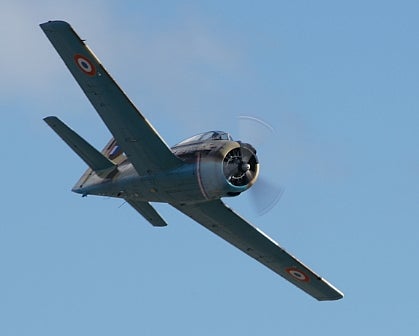Blur isnu2019t always the enemy in photographs: creative use of motion blur is a useful tool, especially if you have an image-stabilised lens that is designed to reduce blur caused by camera-shake.
Digital photography has tended to push the photographic aesthetic more and more towards sharp, and even ultra-sharp, images. At the same time, blur has become more commonly regarded as a sign of photographic inferiority when in fact the exact opposite may well be the case.
It is useful to distinguish between blur that is caused by camera-shake, which is often undesirable, and motion blur that is caused by either deliberate movement of the camera (panning) or intended movement of the subject. There is a general rule that says the shortest exposure time to avoid camera-shake is the reciprocal of the focal length used: so if you are using a 200mm lens or zoom setting then you should take pictures using exposure times of 1/200s or shorter. This may well clash with the time needed to record deliberate motion blur.
In days of old the only way to accommodate such contradictions was to develop excellent camera-craft, often over a period of many years: today there are image stabilisation technologies that allow you to extend the exposure time while keeping the image free of camera-shake. Various claims are made but it is common to read of a three or four f-stop time extension, meaning that our 1/200s in the above example could be shot at 1/25s and the image would still be sharp (in terms of freedom from camera-shake).
An exposure of 1/25s would be sufficient to put some blur onto wind turbine blades or running water in a stream, for example, with the surrounding areas kept sharp. The result is likely to be a considerably more effective image than one in which all movement is arrested.
The aircraft picture at the top of this week’s blog contains deliberate blur to soften the propeller blades as I have a particular aversion to seeing “static” propeller blades on a flying aircraft. An exposure time of 1/200s was used with a 70-300mm zoom set to its maximum focal-length: image stabilisation was provided in-camera by the Sony a850 body. I don’t think the sharpness is as good as it would have been in a picture taken using lens-based image stabilisation but that is just my feeling as I don’t have a side-by-side picture to use for comparison.
Readers with a mathematical/engineering inclination may be inclined to calculate the rotational speed of the propeller. I did this by enlarging the propeller area and then marking the distance moved by the blade during the exposure. (This isn’t the full blur area as the ends correspond with opposite edges of the blade, so it’s necessary to go from the start of the dense blur at one extreme to the end of the light blur at the other extreme.)
I reckon the angle is about 45 degrees, which is one-eighth of a circle and was recorded in 1/200s. This means that the full circle would take 1/25s, so the blade makes 25 rotations in every second. Multiply this figure by 60 and you get a speed of 1500rpm, which sounds believable to me.
Of course you might just look at pictures such as this and rate them purely on their aesthetic qualities but I think that a little lightweight scientific analysis never goes amiss.





